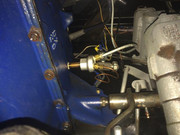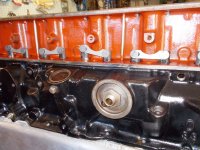mad_science
Well-known member
My previous 250 developed spontaneous oil starvation issues at high RPM that went away after letting the motor sit for ~30sec.
With a new oil pump and tight clearances on new bearings I think it might've been pumping all the oil into the head/valve cover.
It's a common mod to FE engines that see racing and I've heard it suggested here.
Building a new motor so I've got the chance to drill/tap/otherwise restrict flow. Blocking oil flow to something just feels kinda unintuitive, so I'm just a little worried about overshooting on the restriction and killing the valvetrain.
Has anyone here done this successfully and if so how'd you do it?
With a new oil pump and tight clearances on new bearings I think it might've been pumping all the oil into the head/valve cover.
It's a common mod to FE engines that see racing and I've heard it suggested here.
Building a new motor so I've got the chance to drill/tap/otherwise restrict flow. Blocking oil flow to something just feels kinda unintuitive, so I'm just a little worried about overshooting on the restriction and killing the valvetrain.
Has anyone here done this successfully and if so how'd you do it?



